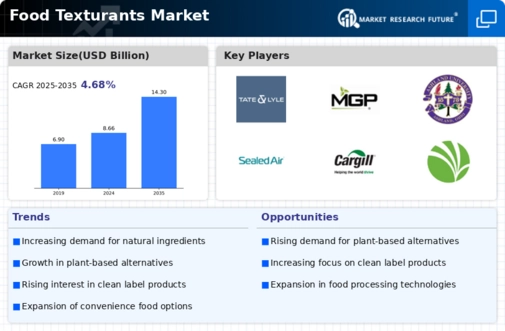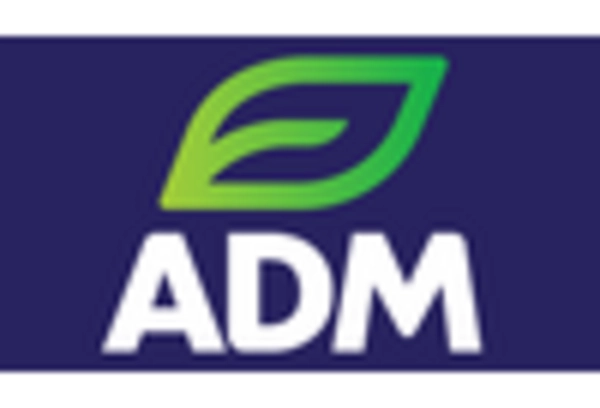Market Trends
Key Emerging Trends in the Food Texturants Market
The market for food texturants is currently characterized by several prominent trends that reflect the changing face of the food industry in big ways. One significant trend among these is a growing preference for plant-based and natural texturants. There is therefore an increasing demand for foods with clean labels having ingredients that are derived from natural sources as consumers’ health consciousness and environmental awareness increases. This shift has resulted in many people opting for plant-based texturants over the traditional synthetic additives such as pectin, agar, and cellulose.
Additionally, there is a rising demand for texture innovation in food products across the world today. To achieve this, novel texturizing agents and techniques are being sought after by all kinds of food manufacturers who want to please consumers with unique tastes. Sufficiently complex hydrocolloids, starches, proteins etc are increasingly used to produce different textures: creamy on smoothie or ice cream; crispy or crunchy for chips; etc in various foodstuffs. This development echoes the desire of customers to have their sense organs fully satisfied while tasting various textures in culinary art.
On a global scale, convenience and ready-to-eat products are attracting great interest in Food Texturants Market today. Busy lives becoming more common among individuals forces them to choose those types of foods which apart from being nutritionally beneficial also possess pleasant texture. As such we have seen an increase in the use of texturants in processed and convenience foods meant to improve mouth feel, stability and general product quality.
Again, health and wellness considerations drive market dynamics towards certain choices regarding food texturants. Increasingly people understand how much diet impacts their state thus they look up at items with healthier profiles than ever before. In other words, some fats may be reduced without hampering flavor while using food texturizers strategically so as to reduce sugar levels as well as fat content but still maintaining good taste and mouthfeel at this stage. This trend is in line with the industry’s response to health concerns and changing requirements of the health-conscious consumers.
The modern Food Texturants Market also experiences some technological improvements going on through manufacturing process. These progressions have been facilitated by innovations in food processing technologies that are helping make texturants more useful and efficient. Among such developments include modified starches, emulsifiers and gelling agents that are more stable, versatile and have better texture for application in different food products. Therefore, these advancements have enabled the market to be able to satisfy growing needs for high quality and new kinds of foods.
Moreover, sustainability is increasingly becoming a critical driver for the Food Texturants Market. Consequently, customers now look for items that conform to sustainable and eco-friendly practices as they become aware of how their consumption patterns impact on their environment. Hence, alternative sources of texturants like seaweed-derived hydrocolloids or fungal-based proteins which have less environmental impact compared with traditional ones are thoroughly explored on today’s market. In this regard, manufacturers begin using sustainable sourcing methods as well as production techniques so as to address consumer concerns while contributing towards making the entire food sector more sustainable at large too.

















Leave a Comment